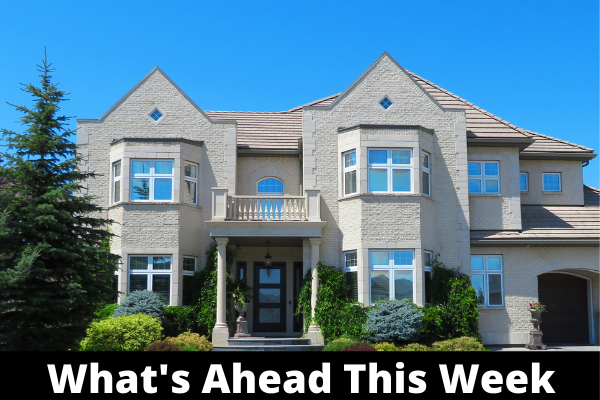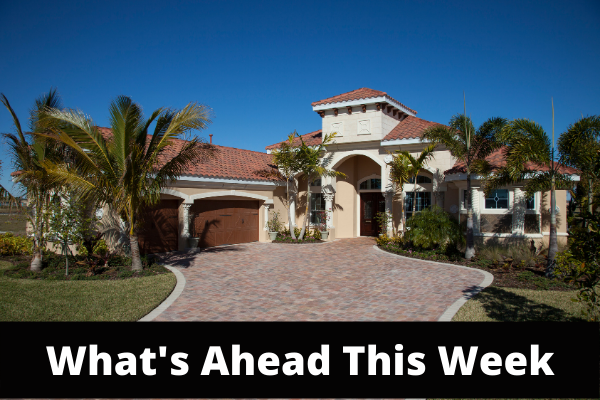What’s Ahead For Mortgage Rates This Week – August 1, 2022
 Last week’s economic news included readings on home price growth, new and pending home sales, and inflation. Weekly reports on mortgage rates and jobless claims were also released.
Last week’s economic news included readings on home price growth, new and pending home sales, and inflation. Weekly reports on mortgage rates and jobless claims were also released.
S&P Case-Shiller: Home Price Growth Slows in May
Home prices rose at a slower pace in May according to the S&P Case-Shiller National Home Price Index. Year-over-year home prices rose by 19.70 percent in May as compared to April’s year-over-year reading of 20.60 percent in home price appreciation. Tampa, Florida led S&P Case-Shiller’s 20-City Home Price Index with 36.10 percent year-over-year home price growth. Miami, Florida followed with 34.00 percent home price appreciation. Dallas, Texas reported a 30.80 percent growth rate in home prices.
The Federal Housing Finance Agency, which oversees Fannie Mae and Freddie Mac, reported 1.40 percent growth in home prices month-to-month and 18.30 percent growth year-over-year for May. FHFA data covers purchase-only transactions associated with home loans owned or backed by Fannie Mae and Freddie Mac. Analysts said that slower growth in home prices signaled a cooling market after years of rapidly rising home prices.
The Commerce Department reported the lowest number of new home sales since the pandemic. New homes sold at a seasonally-adjusted annual pace of 590,000 sales in June as compared to May’s reading of 642,000 sales. Rising mortgage rates and high home prices eroded affordability for first-time and moderate-income home buyers.
Mortgage Rates and Jobless Claims Fall
Freddie Mac reported lower mortgage rates last week as rates for 30-year fixed-rate mortgages fell by 24 basis points to 5.30 percent; rates for 15-year fixed-rate mortgages averaged 4.58 percent and 17 basis points lower than for the previous week. Rates for 5/1 adjustable rate mortgages averaged 4.29 percent and were two basis points lower on average. Discount points averaged 0.80 percent for fixed-rate mortgages and 0.30 percent for 5/1 adjustable rate mortgages.
Fewer first-time jobless claims were filed last week with 256,000 claims filed as compared to the previous week’s reading of 261,000 initial claims filed. Analysts expected 249,000 first-time jobless claims to be filed last week.
The Federal Reserve moved to slow inflation by raising its target interest rate range from 1.50 percent to 1.75 percent to 2.25 to 2.50 percent. Interest rates are expected to rise for consumer loans, credit cards, and variable-rate education loans. The Commerce Department’s personal consumption price index rose by one percent in June, which was the fastest month-to-month growth rate in 40 years. Analysts expected inflation to increase by 0.90 percent.
What’s Ahead
This week’s scheduled economic reporting includes readings on construction spending and job growth; weekly readings on mortgage rates and jobless claims will also be released.

 Last week’s economic news included readings from the National Association of Home Builders on home prices, Commerce Department readings on building permits issued, and housing starts. The National Association of Realtors® reported on sales of previously-owned homes; weekly reports on mortgage rates and jobless claims were also released.
Last week’s economic news included readings from the National Association of Home Builders on home prices, Commerce Department readings on building permits issued, and housing starts. The National Association of Realtors® reported on sales of previously-owned homes; weekly reports on mortgage rates and jobless claims were also released. Last week’s scheduled economic news included reports on home prices, pending home sales, and inflation. Weekly readings on mortgage rates and jobless claims were also released.
Last week’s scheduled economic news included reports on home prices, pending home sales, and inflation. Weekly readings on mortgage rates and jobless claims were also released.